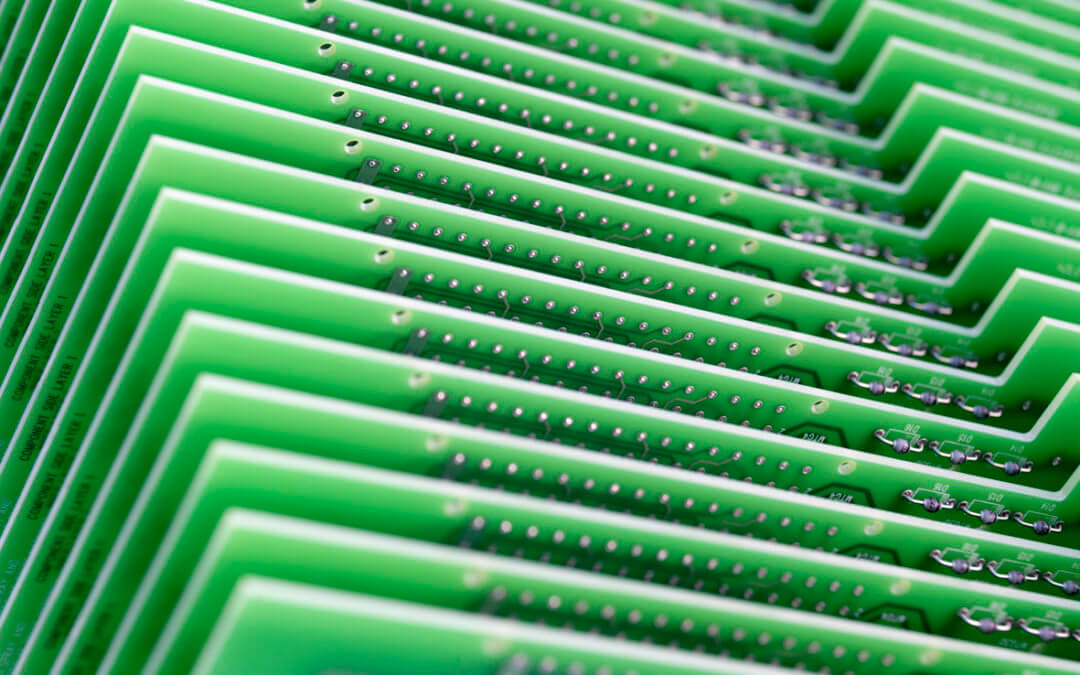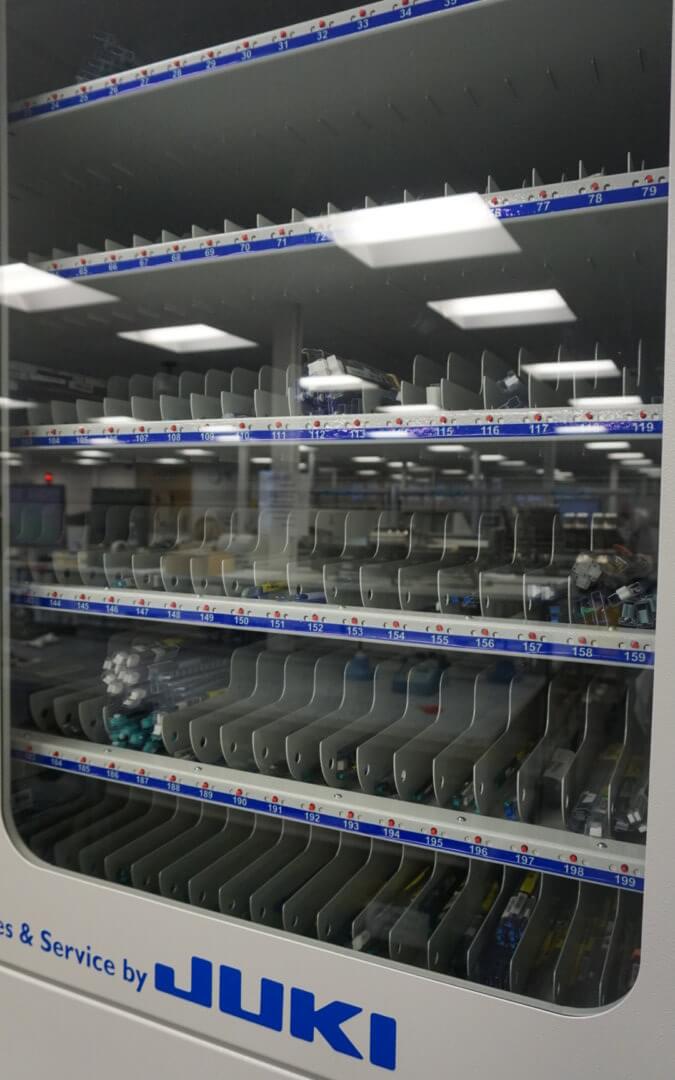They say that from small acorns mighty oak trees grow.
In electronics it’s on blank PCB boards that the grandest of designs are etched – and components mounted – to create the mightiest of devices.
In this review, we’re going to talk you through the options you have when you source blank boards for your electronic PCB assembly.
Taking each option in turn, we’ll explore the different supply routes available to you and the benefits that each offers at each stage of production.
Of the factors affecting your choice you will need to consider:
- Time
- Cost
- Quality
- Availability
- Regulatory requirements for finished product
- Performance requirements for finished product
- Reliability and reputation of supplier
Of course, a very real benefit of working closely with an EMS partner is to take advantage of their expertise in managing the supply chain to meet your requirements and goals. At Chemigraphic our thorough and proactive approach to sourcing ensures you can overcome supply chain challenges and realise your great oaks every time.
Blank board demand
Demand for PCBs – and the blank boards on which they are created – continues to grow.
The world market for PCBs first exceeded the $60 billion mark back in 2014. It is estimated to be touching close to the $80 billion mark by 2024, thanks to a CAGR of 3.1%.
With demand sailing this high, you’d expect some competitive drops in prices for the blank boards – but price is very much dependant on the volumes you are ordering in and the timelines you are working to.
We’ll review later how it can be subject to other factors too.
How to source your supply of PCB blank boards
The three main routes for sourcing blank PCB boards are:
- Quick turnaround routes
- Third-party broker routes
- Direct from overseas manufacturer routes
Let’s take a look at the pros and cons of each of these.
The quick turnaround route
This is usually best-suited to the speed and low volumes demanded during the rapid prototyping <link> of products in the pre-manufacture stage.
Typically, small volumes are required for this, but they are needed very quickly. The need for speed here has tended to mean that UK or European suppliers are used to expedite the orders. But times are changing: as closer relationships are developed with overseas suppliers – particularly based in Special Economic Zones in China – then these are being increasingly used as a quick turnaround option. Delivery times are rapidly dropping and cost savings on even small quantities of blank boards from Asia can be significant.
It is time, and not cost, that remains the main driving force for using quick turnaround suppliers. Ideal for rapid prototyping and proof of concept, they are also be used for unexpected or top-up orders should insufficient stock be held in reserve.
The main drawback of such orders is related to their instant availability. They tend to offer limited technical capabilities (because they are produced so quickly) and come at a higher unit cost (because they are produced in such small quantities).
This makes them unsuitable for more complex or larger volume projects.
The third-party broker route
Using a broker or agent in an offshore location can quickly open out a base of contacts and established relationships with manufacturers and suppliers in that region.
This is an option that tends to be used when first using blank boards from an area or when looking to create an expanded list of trusted suppliers within it.
The obvious benefit offered is that it minimises risk when using a new supply source – the relationship is guaranteed, and the responsibility owned, by the broker.
Brokers can also be useful should a regular supplier’s prices unexpectedly rise or if there are supply shortages from this established source.
As the broker is ordering regularly with suppliers for a large number of customers, there is also the benefit of the reduced costs that their consolidated spend brings.
For medium-volume orders this can represent a very reliable and cost-effective route as it delivers considerable cost-savings without the additional requirements – and hidden costs – involved in managing the entire process directly.
It should be noted, however, that a typical broker fee for acting as the ‘middle-man’ is usually around 20%, and that the additional links created in the supply chain can cause delays and create complexities.
The direct route
Accessing offshore, low-cost suppliers directly is possible thanks to the range of contacts your EMS partner brings to the table.
By sourcing offshore directly a lower price can be achieved. It is critical, however, that you understand the dynamics of the supply chain involved and have developed established relationships with trusted suppliers in these offshore locations.
With no broker involved there is an instant saving of around 20% to be realised and, additionally, you gain direct control over the source and the process. With less links involved it is often easier to reach decisions and resolve any issues much quicker.
This option is best suited to those high-volume projects where engineers’ time and extra work is required as it is only then that the additional work involved in using the direct route can be justified.
The additional work here includes:
- Managing and owning every detail of the process
- Co-ordinating delivery and logistics
- Understanding the conditions that affect the capabilities of the local market
- Establishing relationships with each supplier used
The blank board through the crystal ball
Blank boards – like any other component or material – used in electronic manufacture can be highly responsive to events throughout the global economy.
In recent times we are witnessing the uncertain effects of Brexit threaten our ability to 100% rely on a stable, continued European supply at a consistent price.
Elsewhere, the effects of Donald Trump’s trade war and war of words with China may have unforeseen circumstances – and China is a critical part of our supply chain.
Our CEO, Chris Wootton outlines some more thoughts on this in a recent EPDT article, where he comments:
‘As an EMS, the benefits that China offers in terms of manufacturing and sourcing electronic components are simply too extensive to ignore.
We opened our new sourcing office in Shenzhen in January, and already, our customers are benefiting from the higher volumes and lower costs of component parts thanks to the improved access to China’s pricing structures we can now offer.’
In terms of future trends it should be noted that:
- The Chinese government has steadily increased the level of minimum wage since 2007 – and this rise has been most marked in areas where most electronic parts and supplies are manufactured (such as Shenzhen and Shanghai).
- India, Malaysia, Thailand and Vietnam are increasingly competing for larger orders – but what they save in labour costs is still at present off-set by higher material costs for smaller orders.
- The rise in cost of copper foil will push prices up regardless of where blank boards are sourced. This is a result of limited global copper foil productivity being hit by increasing demand from the production of electrical vehicles (which use this in their lithium batteries).
As ever, OEMs with a trusted EMS partner can achieve the flexibility to successfully navigate the changes, breaks and risks inherent in any global supply chain.
And together we will ensure we grow mighty oaks from the small acorns on our BOM.














